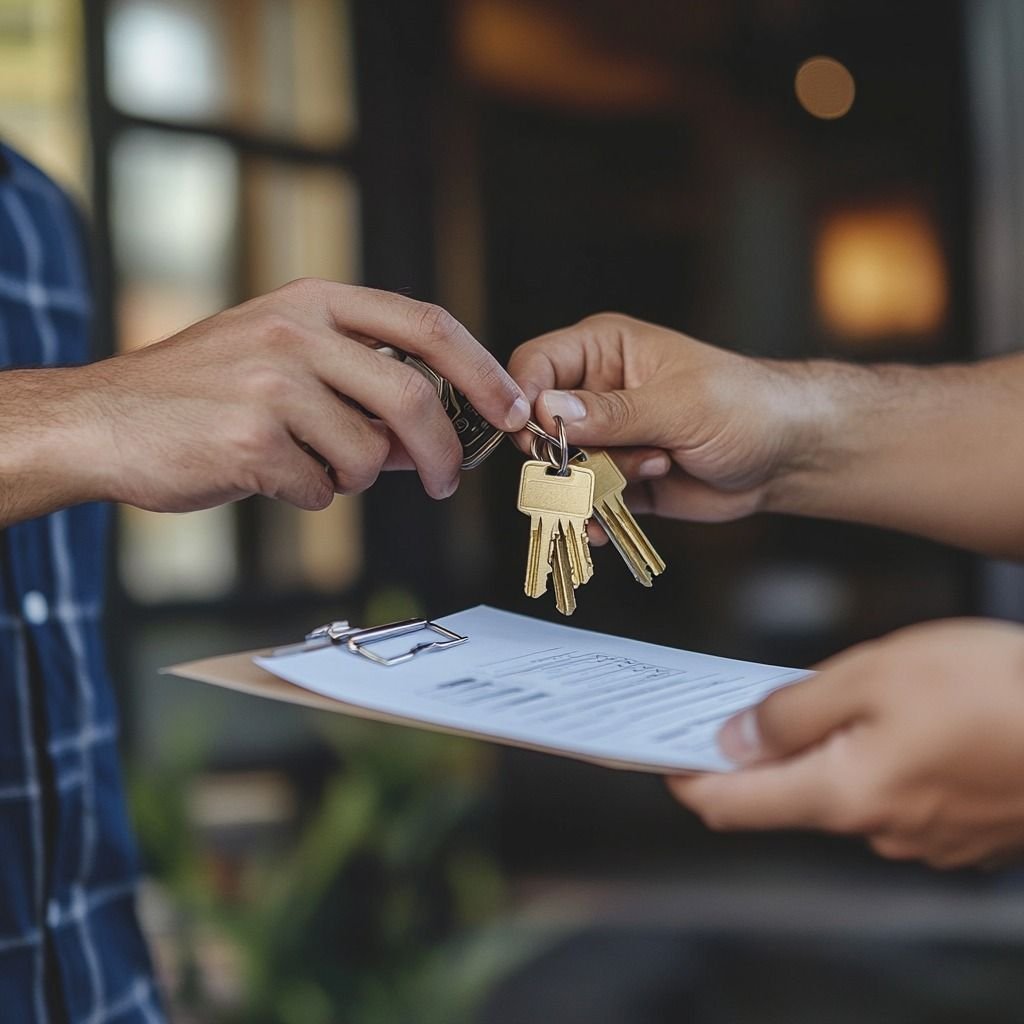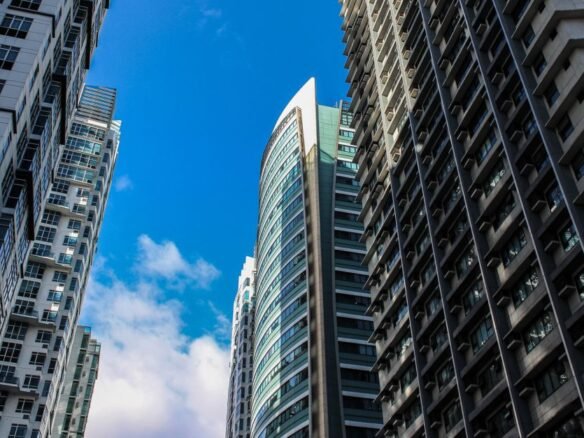- 🏡 How to Sell Property in the Philippines – Real Talk, Real Tips
- 📍 Why the Selling Process Here is Different
- 💡 Step 1: Get Your Paperwork in Order
- 💬 Step 2: Decide on a Selling Price — and Be Ready to Justify It
- 🏠 Step 3: Make the Place Worth Looking At
- 📢 Step 4: Market Like a Pro
- 📄 Step 5: Understand Taxes and Fees
- 🤝 Step 6: Close the Deal Without Stress
- 📊 Step 7: Decide – Sell on Your Own or Hire an Agent?
- 🤝 Step 8: Negotiation and Closing Strategies That Work
- 💬 A Personal Note on Patience
- 📌 Quick Recap for Selling Property in the Philippines
- 📌 The Best Sites to List Your Property in the Philippines
- 💭 Final Thoughts
🏡 How to Sell Property in the Philippines – Real Talk, Real Tips
Selling real estate here isn’t just about sticking a “For Sale” sign in the front yard and waiting for a miracle. The Philippine market has its own quirks — and if you don’t play it right, you could end up waiting months or even years. Whether it’s your family’s old house, an inherited lot, or a condo you’re ready to cash in on, this guide will give you the kind of practical advice people wish they’d known before they started. If you’re figuring out how to sell property in the Philippines, this is where to start.
📍 Why the Selling Process Here is Different
Real talk: the Philippines has its own set of property laws, taxes, and buyer expectations. Add in the cultural side — where haggling is practically a national sport — and it’s clear you need a strategy. If you’re thinking about how to sell property without losing your sanity, you’ll want to know both the paperwork side and the people side. Selling property in the Philippines means understanding both the legal requirements and the market behavior unique to the country.
💡 Step 1: Get Your Paperwork in Order
This is the first thing any serious buyer will ask about. If your property’s documents aren’t complete, expect delays — or worse, a buyer walking away.
- Transfer Certificate of Title (TCT) or Condominium Certificate of Title (CCT) – This proves you actually own the place.
- Tax Declaration – Shows the property’s classification and assessed value.
- Real Property Tax (RPT) receipts – Clear taxes mean smooth deals.
- Special Power of Attorney (SPA) – If someone else is handling the sale for you.
For more details, you can check the Bureau of Internal Revenue (BIR) website, where they explain tax rules for real estate sales in plain language.

💬 Step 2: Decide on a Selling Price — and Be Ready to Justify It
In the Philippines, buyers will almost always negotiate. So if you’re setting your price, make sure it’s based on actual market values, not just what you “feel” the property is worth. A quick way is to browse similar listings in your area on Homes & Land Philippines. You’ll see what other sellers are asking — and what’s sitting unsold.
Pro tip from a seller I know in Cavite: “I priced my house 5% higher than my target so I had room to haggle without losing what I wanted.” That’s smart, and it works here, especially if you want to stand out in the competitive property in the Philippines market.
🏠 Step 3: Make the Place Worth Looking At
First impressions sell homes faster than any Facebook ad. Clean it up. Fix small damages. If the gate is rusty, paint it. If the walls are stained, repaint. You don’t need a full renovation — just enough to make buyers think, “I can move in right away.”
I once helped a friend sell a Makati condo. He spent ₱15,000 on repainting, light fixtures, and deep cleaning. It sold in two weeks for ₱250,000 more than his original asking price. That’s ROI in action.
📢 Step 4: Market Like a Pro
Yes, Facebook Marketplace and property groups can get you some attention — but they’re not enough if you want real results. Why not try to list your property in H&L, where motivated and serious buyers are already searching? Make sure your post includes:
- Clear, well-lit photos (morning light works best)
- A short but specific description
- Nearby landmarks (malls, schools, transport hubs)
- Exact location (or at least barangay and city)
If you can, also link to Google Maps so buyers can check travel time. You’d be surprised how many deals for property in the Philippines fall through because someone didn’t realize it was a 1.5-hour commute to their work.
📄 Step 5: Understand Taxes and Fees
Here’s the part people often overlook: even after finding a buyer, you can lose money if you didn’t factor in taxes and fees. Common ones include:
- Capital Gains Tax – 6% of the selling price or zonal value, whichever is higher
- Documentary Stamp Tax – 1.5% of the selling price
- Notary fees – Usually 1–2% of the selling price
Pag-IBIG has a useful page on property transactions that can give you a clearer picture — check their official site for official info and updated rates.
🤝 Step 6: Close the Deal Without Stress
Once you’ve agreed on a price, you’ll need to sign a Deed of Sale. This must be notarized, and the buyer will usually handle the transfer of the title — but make sure you keep copies of everything.
And here’s a tip from experience: don’t hand over the original title until full payment has cleared. Sounds obvious, but I’ve seen sellers trust too much and end up chasing payments. This is a basic rule when selling any type of property in the Philippines.
📊 Step 7: Decide – Sell on Your Own or Hire an Agent?
Some people think agents just take a cut and post your listing online. The truth? A good broker can speed up your sale, connect you with pre-qualified buyers, and handle the headache of paperwork.
If you go with an agent:
- Look for one licensed under the Professional Regulation Commission (PRC).
- Agree on the commission rate upfront (usually 3–5%).
- Ask how they plan to market your property.
If you sell on your own:
- You’ll save on commission fees.
- But you’ll spend more time handling inquiries, meet-ups, and negotiations.
- You must be ready to answer legal and technical questions.
There’s no one-size-fits-all. If your property in the Philippines is in a hot area like Makati, BGC, or Cebu, you might sell fast even without an agent. But if it’s a rural or unique property, an agent’s network could make all the difference.
🤝 Step 8: Negotiation and Closing Strategies That Work
Negotiation isn’t just about the price — it’s also about terms. Some buyers will offer your asking price but request a long payment term. Others will ask for discounts if they’re paying in cash.
Here are a few ways to negotiate smart:
- Always know your “walk-away” price — the minimum you’re willing to accept.
- Offer small incentives like including appliances or covering minor repairs.
- Let buyers feel they’re winning. Even a small concession can seal the deal.
Closing a deal for property in the Philippines often involves juggling schedules between you, the buyer, the bank, and the notary. Keep all your documents ready and set deadlines in writing. This keeps momentum and avoids months-long delays.
💬 A Personal Note on Patience
When I sold my first property, I thought it would be quick. It took six months. And that’s okay. In the Philippines, sales often take longer because buyers need time for bank loan approvals or paperwork. The key is to stay visible and keep your listing active — especially if your property in the Philippines is in a competitive area.

📌 Quick Recap for Selling Property in the Philippines
- Sort your documents first — no buyer wants a messy title.
- Price with room for negotiation.
- Make the property look inviting.
- Advertise in the right places.
- Factor in taxes and fees from the start.
- Protect yourself during the closing process.
📌 The Best Sites to List Your Property in the Philippines
Finding buyers is a whole lot easier when your property is visible in the right places. If you’ve been wondering where the serious buyers are hanging out online, we’ve got you covered.
We’ve actually broken down the top real estate listing sites in the Philippines in one of our other blogs — Real Estate Sites in the Philippines: Best Site for Property Listings. It’s a complete guide that explains which platforms attract the most traffic, how to use them effectively, and why some outperform others when it comes to quality leads.
If you’re serious about selling faster, this is worth a read. The blog doesn’t just list websites — it gives you insider tips on maximizing your property’s visibility, from crafting attention-grabbing titles to using high-quality photos that stop buyers mid-scroll.
By combining what you learn there with the strategies in this guide, you’ll not only post your property — you’ll post it where it actually gets noticed.
💭 Final Thoughts
Figuring out how to sell property here isn’t about luck — it’s about preparation, patience, and knowing the market. If you put in the effort upfront, you’ll sell faster, avoid headaches, and walk away with the deal you actually wanted. Selling property in the Philippines the right way means being prepared from day one.
Thinking of listing your property? Post it on H&L Philippines to get in front of serious buyers right away.




Join The Discussion